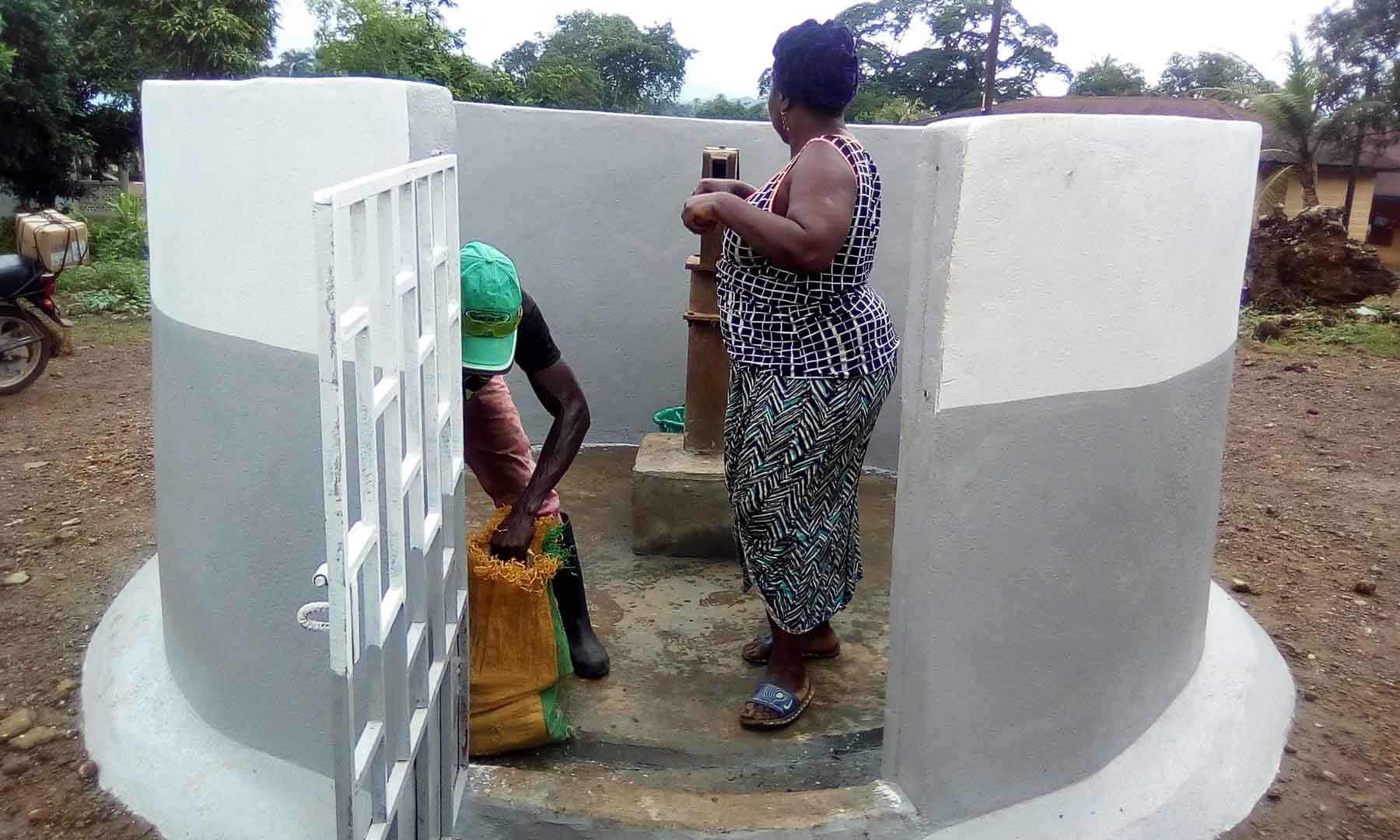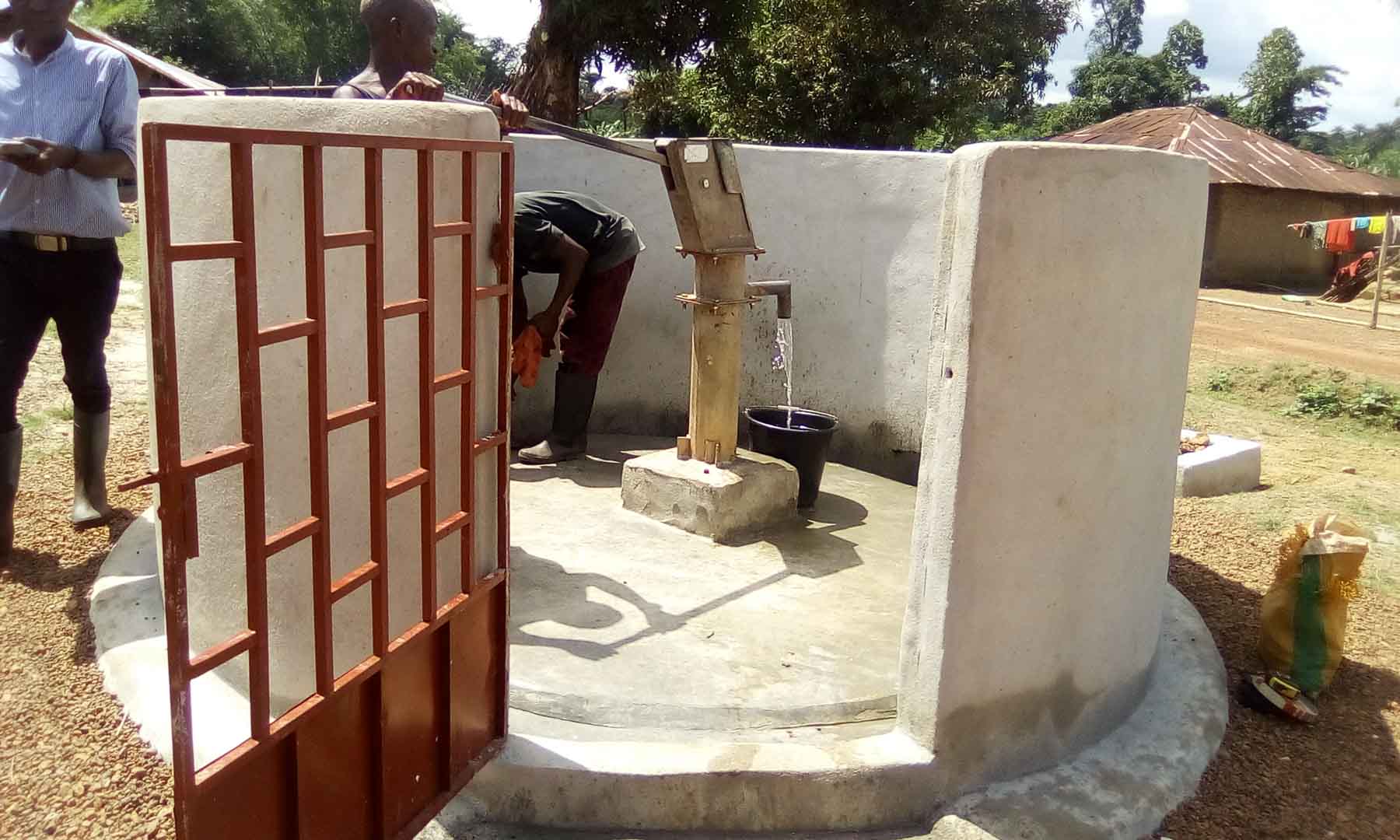Climate action through clean drinking water
Sierra Leone is a largely rural country where households typically use wood fuel on inefficient three-stone fires to purify their drinking, cleaning, and washing water. This process results in the release of greenhouse gas emissions from the combustion of wood – however, these emissions can be avoided by using efficient borehole technology that does not require fuel to supply clean water.
Our project is helping communities in the Kono region to restore 57 wells. In cooperation with the local population, damaged wells are repaired and regularly maintained, which secures the regional water supply. The availability of clean drinking water eliminates the need to boil water, saving CO2 emissions.
Thus, it not only contributes to climate action but also impacts gender equality. Girls and women are particularly affected by poor water conditions due to the responsibility of household water supply. Providing clean water through boreholes reduces their time spent collecting water and firewood, which can now be used for education or additional income.

According to UNICEF, 2.2 billion people worldwide lack reliable access to safe and clean drinking water – 26% of the global population. Women and girls often must travel long distances to collect water from the nearest water point. To make the water safe for use, it is typically boiled over open fires using wood, which generates carbon emissions and harmful smoke. Additionally, the collection of firewood contributes to deforestation.
Climate projects for clean drinking water offer practical solutions. Water can be treated chemically (e.g., with chlorine-based purifiers), mechanically (e.g., with water filters), or through tapping groundwater from wells. For this, wells must be repaired, maintained, or newly installed, as only functioning wells provide clean drinking water. These solutions grant even remote villages access to safe water.
Such projects also reduce carbon emissions by eliminating the need to boil water and help combat deforestation. The clean drinking water projects in ClimatePartner's portfolio are registered with international standards.
Explore our projects
Biochar for Climate Action, Healthy Soils, and Better Harvests

A certified climate project combined with additional commitment

Expansion of renewable energy generation in Asia

Ceramic water filters save CO2 and improve health

Improved cookstoves worldwide – for better health and cleaner air

A certified climate project combined with additional commitment

Powering access to renewable energy in Africa

A certified climate project combined with additional commitment

Restored ecosystems remove carbon

Turning degraded farmlands into healthy ecosystems

Improved cookstoves - better for health and the environment


















